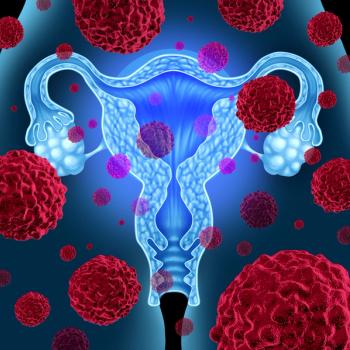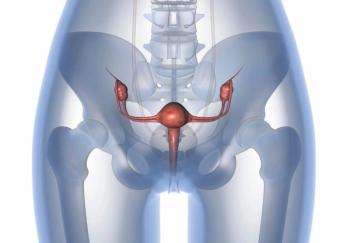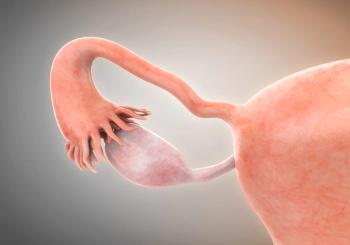
Oncology NEWS International
- Oncology NEWS International Vol 23 No 5
- Volume 23
- Issue 5
Taxol/Cisplatin Extends Survival in Advanced Ovarian Ca
PHILADELPHIA--Women with advanced ovarian cancer had 50% longer survival when they received a first-line regimen combining paclitaxel (Taxol) and cisplatin (Platinol), says William P. McGuire, MD, and his colleagues in the Gynecology Oncology Group (GOG).
PHILADELPHIA--Women with advanced ovarian cancer had 50% longersurvival when they received a first-line regimen combining paclitaxel(Taxol) and cisplatin (Platinol), says William P. McGuire, MD,and his colleagues in the Gynecology Oncology Group (GOG).
Median overall survival was 38 months for the paclitaxel combinationvs 24 months for standard cisplatin/cyclophosphamide, he said.
"The results of this trial are extremely significant,"said Dr. McGuire, professor of medicine, Emory University, andlead investigator for the study. "It is my strong feelingthat all women with this type of ovarian cancer should be primarilytreated with paclitaxel and cisplatin. This therapy should becomethe new standard for advanced ovarian cancer."
The GOG trial involved 386 eligible women with incompletely resectedstage III ovarian cancer or any stage IV ovarian cancer who hadreceived no previous chemotherapy or radiation for their ovariancancer.
The patients were randomized to a regimen of 75 mg/m² ofcisplatin plus either 750 mg/m² of cyclophosphamide or 135mg/m² of paclitaxel, as a 24-hour continuous infusion. Bothregimens were given every 3 weeks for a total of six courses.Women receiving paclitaxel were premedicated with dexamethasone,diphenhydramine, and a histamine H2 antagonist.
In addition to increased overall survival, patients receivingpaclitaxel had longer periods of progression-free survival--18months vs 13 months for standard therapy, Dr. McGuire said inthe published report (N Engl J Med 334:1-6, 1996).
Moreover, response rates were higher with paclitaxel. Of 216 womenwith measurable tumors, 73% receiving paclitaxel/cisplatin respondedvs 60% in the standard therapy arm. The complete clinical responserate with paclitaxel/cisplatin was 51% vs 31% for the standardcombination treatment.
Side effects of the paclitaxel/cisplatin combination were "clinicallymanageable," Dr. McGuire said. Although severe neutropeniawas more common in the paclitaxel group, the incidence of febrileneutropenia was low and was consistent with the brevity of paclitaxel-inducedmyelosuppression.
In the standard therapy group, persistent neutropenia was morelikely to cause delays in treatments. In addition, more patientsin the paclitaxel group finished all six courses of therapy (87%vs 78%).
Caution About Substitutions
Dr. McGuire cautioned that variants of the cisplatin/paclitaxelregimen are being used without proper evaluation. "Some clinicianshave substituted carboplatin [Paraplatin] for cisplatin, eventhough the carboplatin-paclitaxel combination is still in a phaseI evaluation," he said.
He also warned against use of a shorter paclitaxel infusion thanthe 24 hours employed in the study. "This approach may bepreferred by patients and may have financial advantages, but theefficacy of a 3-hour infusion of paclitaxel has not been verified."This is a concern because in vitro data show that the durationof exposure to paclitaxel is more im-portant than the peak exposurelevel.
Articles in this issue
almost 30 years ago
Earlier Unrelated BMT Is Effective in CML Subgroupalmost 30 years ago
Prostate Cancer Patients Face a Host of Psychosocial Issuesalmost 30 years ago
NSABP to Study Docetaxel in Operable Breast Canceralmost 30 years ago
Panel Recommends Approval of Talc for Malignant Pleural Effusionsalmost 30 years ago
ODAC Recommends Approval of Verluma for Staging of SCLCalmost 30 years ago
Minorities Lack Internet Access to Cancer Research Dataalmost 30 years ago
Fludarabine Produces CRs as First-Line CLL Therapyalmost 30 years ago
M.D. Anderson's C. Stratton Hill Receives Award From American Cancer Societyalmost 30 years ago
Managed Care: The View From Salick Managed CareNewsletter
Stay up to date on recent advances in the multidisciplinary approach to cancer.

















































































